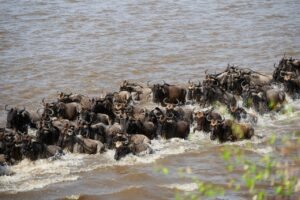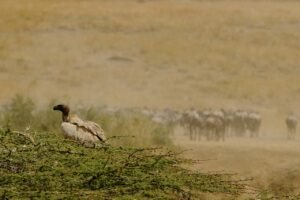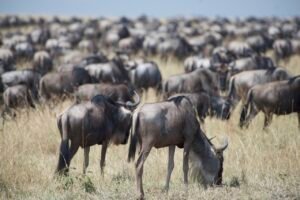Highlights:
- Overview of the Great Migration and its significance in the Serengeti ecosystem.
- Best times and locations to witness the migration (e.g., river crossings, calving season).
- Tips for choosing the right safari tour to catch this awe-inspiring event.
- Insights into the behavior of the animals during this migration.
- Suggested camps and lodges for a front-row seat to the action.



Overview
The Serengeti Wildebeest Migration is one of nature’s most awe-inspiring spectacles. Every year, over 1.5 million wildebeests, accompanied by zebras and gazelles, journey across the Serengeti and Masai Mara in search of fresh grazing lands. This cyclical movement showcases the raw beauty of East Africa’s wildlife and its interconnected ecosystems.
Best Times to Witness the Migration
- December to March: Calving season in the southern Serengeti, where thousands of wildebeest calves are born. Predators like lions and cheetahs take advantage of this time, offering dramatic predator-prey interactions.
- April to June: The herds begin moving northward. Witness the incredible long columns of wildebeests traversing the plains.
- July to October: River-crossing season, particularly at the Mara and Grumeti Rivers. The dramatic crossings involve tense encounters with crocodiles and swift currents.
Tips for a Successful Safari
- Choose the Right Season: Align your visit with the stage of the migration you wish to witness. Each phase offers unique experiences.
- Stay Close to the Action: Lodges and mobile camps, such as Migration Camps, adapt to follow the herds.
- Book Early: Safaris during peak migration seasons fill up quickly.
